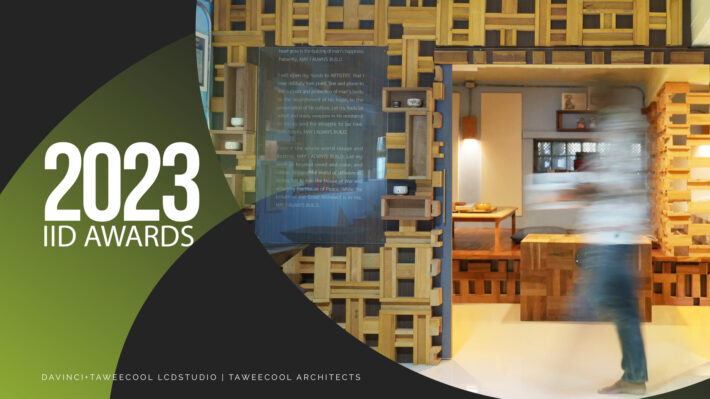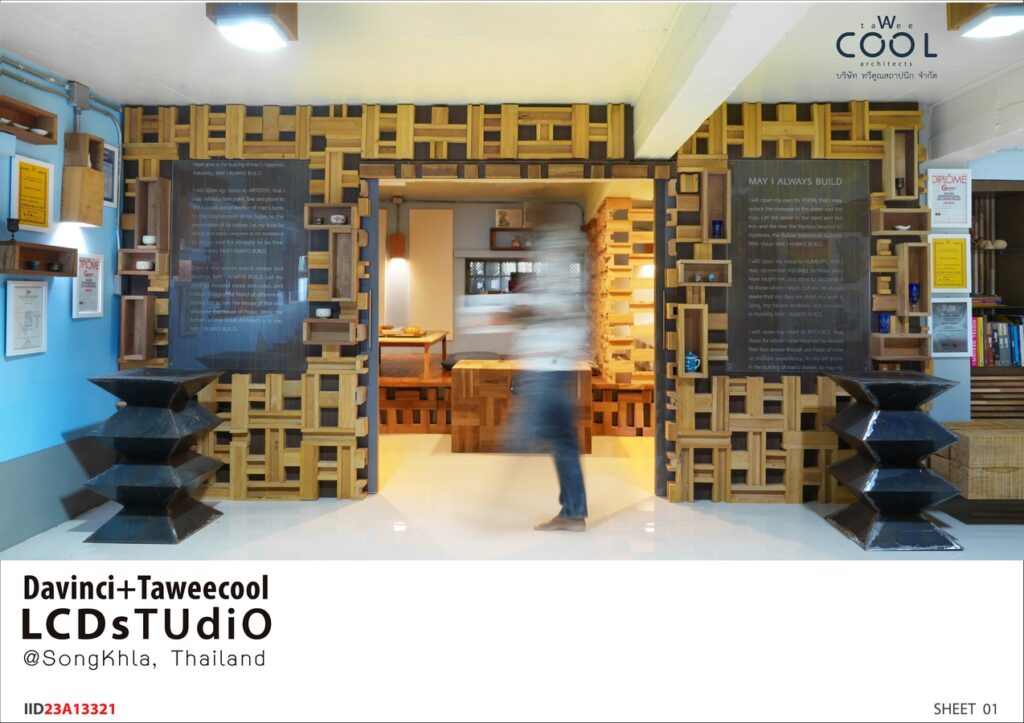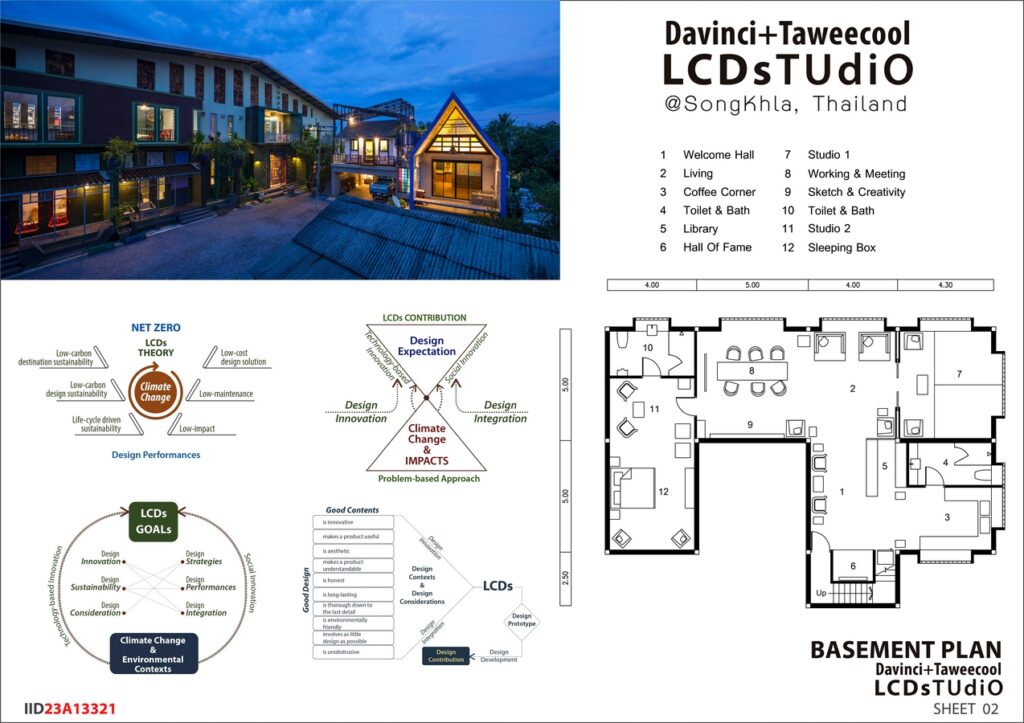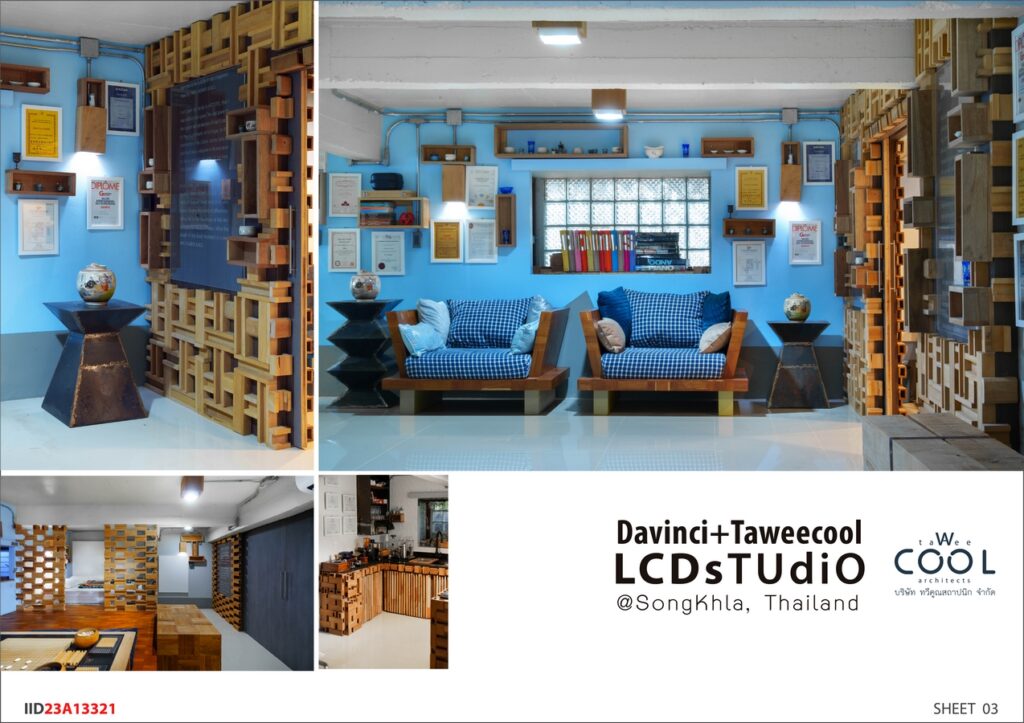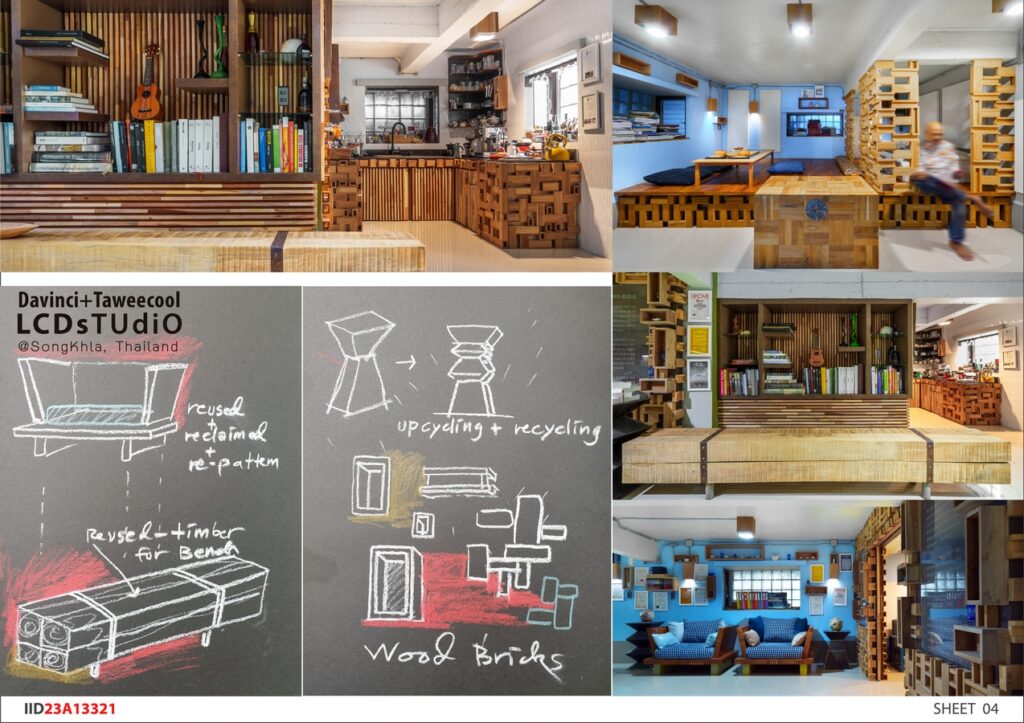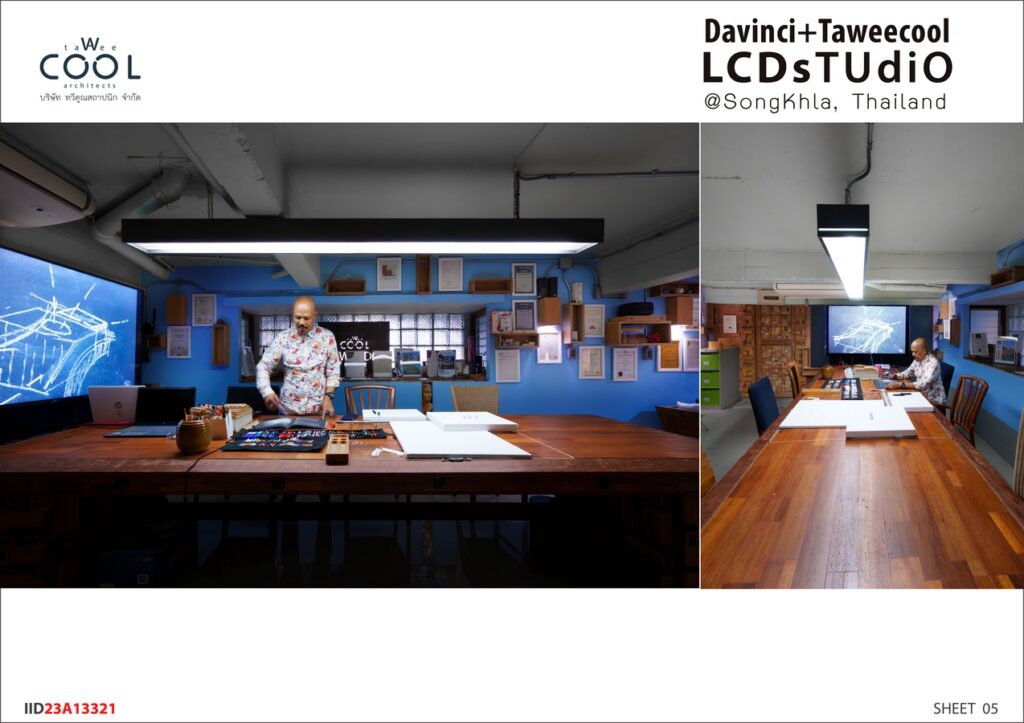Interior architecture doesn’t have to mean design anew. Sometimes, it can mean rearranging things in order rediscover an innovation with authenticity and tradition–based tectonics in the context of LCDs: low carbon design solution.
Low-carbon interior architecture innovations are leading future built environment
International Interior Design Awards 2024: Entries Open!
Take your work to the next level. Register Now…
Gold 🏆 Winner
International Interior Design Awards 2023
Davinci+Taweecool LCDsTUdiO
Workplace & Office Space Interior Built
Firm
Taweecool Architects
Designer
Prof. Khiensak Seangklieng. Ph.D., ASA.
Design Team
Prof. Khiensak Seangklieng. Ph.D., ASA., Sirichai Tonthong
Location
Songkhla, Thailand
Country
Thailand
Photographer/Copyright
©Taweecool Architects
Davinci + Taweecool LCDs studio, new workplace designed by Taweecool architects which integrated as a flagship project represents the 85 % of reuse, recycled and reclaimed concept for design and construction. All waste, recycle, and reuse materials are contributed from Taweecool house construction’s site.
Passive design is an effective tool to enhance interior architecture and spatial design while upgrading the energy system. At the same time, low-carbon innovations are vital for integrating renewable energy use in interior architectural design and capturing human factors through user behavior. As the threat of climate change looms large, architects and engineers have a leading role to create the design process of proposed projects
With almost 30% of global carbon emissions caused by the construction and running of buildings, there is a need radically rethink the materials we use to build our towns and cities. Rather than experimental new inventions, this display explores three ancient materials that are vital for a low-carbon future: wood, stone and innovative rammed earth.
Low carbon technology products produce less pollution than their traditional energy counterparts, and will play a vital role in the transition to a low carbon economy. Low carbon technologies include mechanics like wind turbines, solar panels, biomass systems and carbon capture equipment.
Designing to these and other questions benefits the client’s long term investment, contributes to a zero-carbon goal, drives sustainability strategies, and can protect the client financially against future changes in legislation regarding zero-carbon building strategies.
Constructing Davici+Taweecool LCDs studio
At this stage it all comes together; design aspiration meets professional reality. Methodology shifts; weekly design notes monitor progress and create valuable lessons transferable to future projects.
Carbon Negative Interior Architecture Materials of LCDs studio
- Recycled metals: Processes involved in producing metals are very carbon intensive
- Low-carbon wooden bricks
- Green tiles
- Reuse timber
- Green or carbon negative concrete
Fundamental Aims
- To provide architectural values of modern workplace character with a sense of creativity into design development.
- To give spatial qualities and values via a sense of transparency of tradition-based tectonics.
To apply the most advanced technology of LCDs to establish an environmental example for the future.


